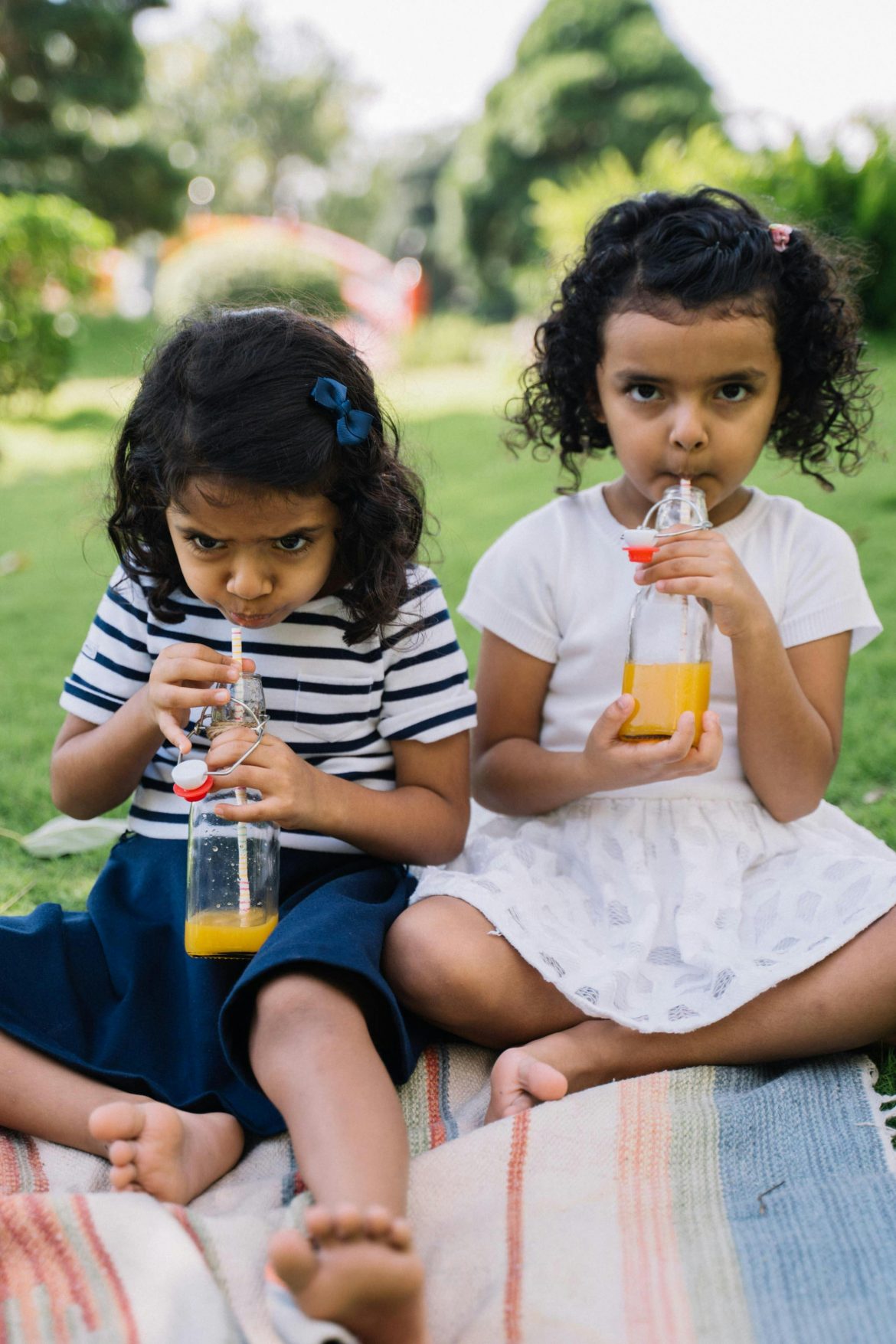We know fruits are rich in fibre, vitamins, and minerals, and we’re told to eat more of them. So, when a bottle says “100% fruit juice”, it feels like the healthy choice. I grabbed the nearest bottle of OJ the other day, without reading the label, trusting the “fresh orange juice” claim. Later at home, I spotted the fine print: 50% orange juice, 50% sugar syrup. I felt duped.
This experience got me thinking, how clear are fruit juice labels, really?
Are fruit juice labels hiding the truth?
It might feel like they are, but with the most recent proposed labelling laws for South Africa, the straightforward answer is no. Under the current draft of South African food labelling regulations, any drink that contains more than 5g of sugar (just over a teaspoon) per 100ml, or any amount of artificial sweetener, must show a black and white triangle with the word “warning” in bold capital letters.
The current draft regulations (which have not been made official) state that 100% fruit juices aren’t required to carry the triangle on labels. Yes, fruit juice contains a considerable amount of sugar. However, this sugar is considered “naturally occurring”, an easy loophole for companies to use.
“Naturally occurring” doesn’t mean that these sugars aren’t harmless. Whole fruits provide us with many health benefits, the most important one being fibre. Fibre is the reason that we can consume fruits daily without the harmful effects of their high and naturally occurring sugar content. The fibre helps slow digestion, controlling blood sugar levels, keeping fruits healthy, and making them less harmful.
Without it, like in 100% fruit juices, the natural sugars are digested quickly, raising our blood sugar levels almost instantly, having the opposite desired effect. A South African Journal of Clinical Nutrition study found that almost three-quarters of fruit juices have more sugar than the proposed limit. However, with the current draft regulations, only 17% would require a warning label because most sugar is natural.
Does it really matter?
You might be thinking: “Coke and energy drinks are worse, what’s the big deal with natural sugars?” But when we look closer, the difference isn’t as dramatic as we’d hope.
A 400ml can of Coke contains around 10.6g of sugar per 100ml; that’s nearly 12 teaspoons of added sugar. But some 100% fruit juices in South Africa contain even more sugar per 100ml, and still don’t require a warning label, because their sugars are technically ‘natural’.
Too much sugar, even the “natural” kind, can be harmful
Healthcare authorities, like the South African Journal of Clinical Nutrition and the World Health Organisation, agree: too much excess sugar, no matter the source, is linked to health issues.
The WHO recommends that adults limit their daily sugar intake to between six and twelve teaspoons. Yet just one serving of 100% fruit juice or soft drink can easily exceed that limit. Many people consume two to four cans a day, with parents packing a couple of 100% fruit juice cans in their children’s lunchboxes for school, assuming it’s the healthier option.
Without warning labels on fruit juices, most consumers are unaware of just how much sugar they’re drinking, or that the effects of “natural” sugars can be just as damaging over time. We’re talking obesity, type 2 diabetes, and tooth decay, among others, especially in children.
What can we do about it?
- Read the ingredient list, not just what the label claims
- Choose whole fruit over fruit juice when possible, to benefit from the fibre
- Limit fruit juice servings, or dilute with water (especially for children)
- Watch for misleading terms like “no added sugar”, which doesn’t mean low sugar
Fruit juice might seem like the healthiest alternative, but without the fibre and with high natural sugar contents, it’s more of a treat than a staple. The labels might not lie, but they don’t tell the whole truth either. Look twice before you sip, and when in doubt, eat the whole fruit.
Also See: Hungry for change? New app helps you eat well and waste less.
Hungry for change? New app helps you eat well and waste less.

